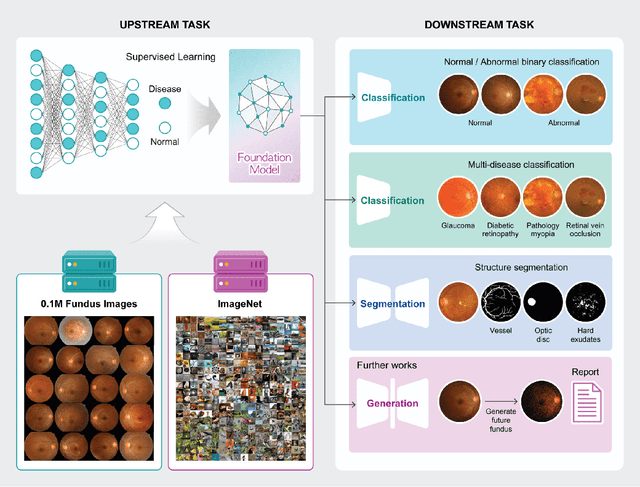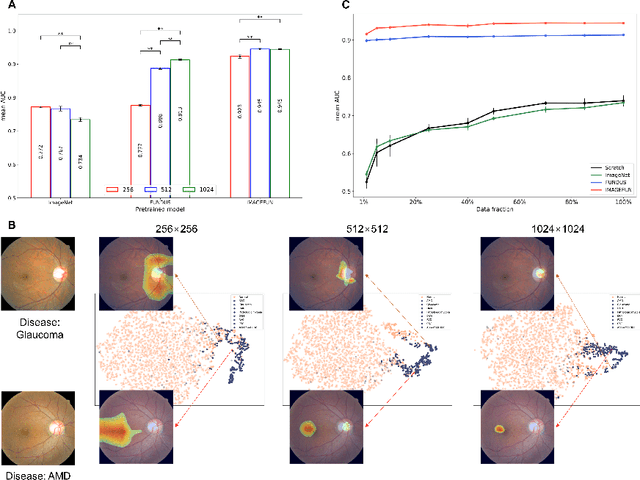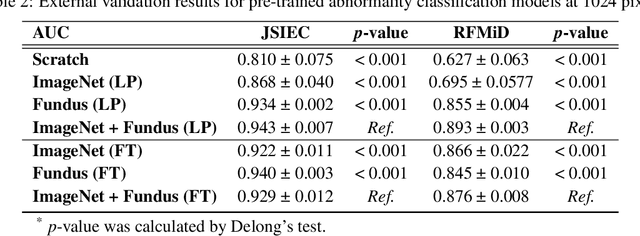Eun Kyung Choe
A Disease-Specific Foundation Model Using Over 100K Fundus Images: Release and Validation for Abnormality and Multi-Disease Classification on Downstream Tasks
Aug 16, 2024



Abstract:Artificial intelligence applied to retinal images offers significant potential for recognizing signs and symptoms of retinal conditions and expediting the diagnosis of eye diseases and systemic disorders. However, developing generalized artificial intelligence models for medical data often requires a large number of labeled images representing various disease signs, and most models are typically task-specific, focusing on major retinal diseases. In this study, we developed a Fundus-Specific Pretrained Model (Image+Fundus), a supervised artificial intelligence model trained to detect abnormalities in fundus images. A total of 57,803 images were used to develop this pretrained model, which achieved superior performance across various downstream tasks, indicating that our proposed model outperforms other general methods. Our Image+Fundus model offers a generalized approach to improve model performance while reducing the number of labeled datasets required. Additionally, it provides more disease-specific insights into fundus images, with visualizations generated by our model. These disease-specific foundation models are invaluable in enhancing the performance and efficiency of deep learning models in the field of fundus imaging.
Semi-Supervised Graph Representation Learning with Human-centric Explanation for Predicting Fatty Liver Disease
Mar 05, 2024


Abstract:Addressing the challenge of limited labeled data in clinical settings, particularly in the prediction of fatty liver disease, this study explores the potential of graph representation learning within a semi-supervised learning framework. Leveraging graph neural networks (GNNs), our approach constructs a subject similarity graph to identify risk patterns from health checkup data. The effectiveness of various GNN approaches in this context is demonstrated, even with minimal labeled samples. Central to our methodology is the inclusion of human-centric explanations through explainable GNNs, providing personalized feature importance scores for enhanced interpretability and clinical relevance, thereby underscoring the potential of our approach in advancing healthcare practices with a keen focus on graph representation learning and human-centric explanation.
 Add to Chrome
Add to Chrome Add to Firefox
Add to Firefox Add to Edge
Add to Edge